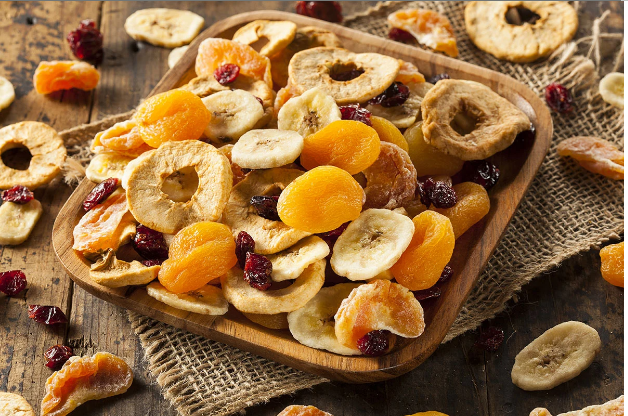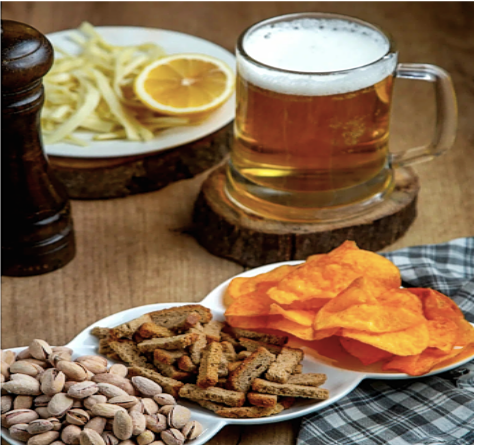Your cart is currently empty!
Medical Uses Of Pistachios For Common Ailments
 The pistachio belongs to the Anacardiaceae family, claiming the cashew, mango, sumac, and poison oak. There are approximately twelve species of Pistacia, nearly all of which exude turpentine or mastic, and just a few yield small edible nuts. Only Pistacia Vera produces the pistachio nut, which is popular throughout the Mediterranean world. Members of the Anacardiaceae bear fruit that are drupes and, in some cases, have urushiol, an irritant for the skin. The pistachio in the Anacardiaceae is in the same family as yellow mombin, Peruvian pepper, poison ivy, poison oak, and sumac.
The pistachio belongs to the Anacardiaceae family, claiming the cashew, mango, sumac, and poison oak. There are approximately twelve species of Pistacia, nearly all of which exude turpentine or mastic, and just a few yield small edible nuts. Only Pistacia Vera produces the pistachio nut, which is popular throughout the Mediterranean world. Members of the Anacardiaceae bear fruit that are drupes and, in some cases, have urushiol, an irritant for the skin. The pistachio in the Anacardiaceae is in the same family as yellow mombin, Peruvian pepper, poison ivy, poison oak, and sumac.
The edible pistachio is a deciduous tree that grows slowly to a height and spread of 25-30 feet. It can survive under dry, adverse conditions in poor, stony terrain where there may be no rainfall for most of the year. It can grow well on steep, rocky slopes suitable only for sure-footed goats. Pistachios can endure droughts very nicely but succumb to abundant rain, so well-drained, somewhat sandy soil is essential. It thrives in places that have winters cold enough to break bud dormancy and hot, long summers. The summers are necessary for proper ripening of the nuts. You may find it in numerous quantities in certain parts of Iran, where temperatures can vary from as low as 15°F in the winter to a sizzling 110°F in the summer. The medical uses of pistachios are long sought after in multiple cultures.
What Makes This Nut Different
This nut differs from other popular dessert nuts in the characteristic green of its kernel. This is an essential clue in determining the freshness and quality of pistachios. The coloration varies from yellowish to various shades of green. Generally, the deeper the shade of green, the more the pistachios are valued.
The fruits grow in clusters resembling grapes. Though it is commonly known as a nut, the fruit of the pistachio is technically classified by botanists everywhere as a drupe, the edible portion of which is the seed itself. This oblong kernel is close to an inch long and half an inch in diameter. A thin, ivory-colored, bony shell protects it from dust, dirt, and artificial air pollution.
When conditions are favorable, the shells split longitudinally along their sutures before harvest and appear like a laughing face. In Iran, this is termed “pistehkhandan,” loosely translated, signifies the “laughing pistachio.” It is a desirable characteristic since the nuts are usually marketed in the shell, and when the shell is split, the kernel can be more readily extracted with the fingers.
However, if unfavorable weather conditions have prevailed during the nut’s growth and development, the shells won’t split open as they should. A sorrowful, time-honored expression of nut growers in parts of Turkey covers this misfortune rather nicely eloquently: “Too bad, our pistachios aren’t laughing this year.” The unsplit nuts are considered inferior and fetch a low price in the marketplace.
An Egyptian Cure For Dysentery

Pistachio nuts figured prominently in the ancient cultures of the Old World. The aged patriarch Jacob instructed his sons to take with them on their next sojourn back to Egypt ” …a present, a little balm, and a little honey, spices, and myrrh, nuts, and almonds” (Genesis 43:11). The nuts he referred to were pistachios.
The Egyptians were especially fond of nuts, and they were used as ingredients in sweetmeats and confectionery.
Amedic dysentery, also called Amebiasis and Ameboic Dysentery, is common in many Third World countries. In this location, people only sometimes practice good sanitation with the greatest care. Infection with Entamoeba histolytica through lousy food or water can be either mild or severe. The effects of this condition are diarrhea resulting from ulcerative colon inflammation.
Dating back to ancient times, Egyptians have revered pistachios not just as a culinary delight but as a potent remedy for dysentery. Historical records reveal their use in traditional Egyptian medicine, where pistachios were employed to address gastrointestinal issues.
Rich in antioxidants, these nuts have a recognition for their anti-inflammatory properties, relieving dysentery symptoms. The high fiber content regulates bowel movements and contributes to digestive health. The ancient Egyptians held in high regard. Embracing the holistic healing properties of pistachios, Egyptians leveraged nature’s pharmacy for a time-tested approach to combating dysentery.
Benefits of the Medical Uses Of Pistachios
In the world of snacks, pistachios are emerging as more than just a tasty treat—they’re a powerhouse of health benefits. Look at the scientific revelations behind the vibrant green nut, Pistacia vera.
Cracking Open Cardiovascular Health

Pistachios satisfy your snack cravings and might also protect your heart. Packed with monounsaturated and polyunsaturated fatty acids, these nuts show promise in tweaking our cholesterol levels. Pistachios could be a heart-healthy choice. They lower bad cholesterol (LDL) while boosting the good kind (HDL), potentially reducing the risk of cardiovascular diseases.
Ever thought your snack could protect your eyes? You can be crucial in promoting ocular health by incorporating pistachios into your diet. Loaded with antioxidants like lutein and zeaxanthin, they contribute to overall health. These compounds are warriors against free radicals, potentially fending off chronic diseases linked to oxidative stress.
Gut-Friendly Goodness and Weight Management
Fiber is the unsung hero of digestive health, and pistachios are here to deliver. Not only do they keep things moving smoothly, but the combo of fiber, healthy fats, and protein may also help you feel full. The snack might be your secret weapon in the battle against overeating.
Pistachios aren’t just about the crunch; they bring a nutrient party. Vitamin B6, thiamine, phosphorus, potassium—they’ve got it all. Incorporating these essential nutrients into your diet can contribute to your overall well-being.
Fitness Industry And Medical Uses Of Pistachios

In the dynamic realm of fitness, where performance and nutrition converge, pistachios are emerging as a go-to snack for health enthusiasts and athletes alike. Beyond their delightful crunch, these green wonders offer a unique combination of nutrients that align seamlessly with the demands of an active lifestyle.
Fitness and pistachios, rich in heart-healthy monounsaturated fats and muscle-friendly protein, make an ideal pre- or post-workout snack. The presence of antioxidants, including lutein and zeaxanthin, adds extra benefits by potentially reducing exercise-induced oxidative stress.
The fiber content not only aids in digestion but also contributes to a sustained energy release, providing a steady source of fuel during workouts. Additionally, medical uses of pistachios offer a nutrient-dense profile with essential vitamins and minerals, promoting overall well-being.
Fitness enthusiasts increasingly recognize pistachios’ role in supporting their goals, from muscle recovery to sustained energy. As the fitness industry evolves, pistachios are establishing themselves. They are not just as a snack but as a strategic ally in achieving and maintaining peak physical performance.
Pros Of Implementing Pistachios In Your Diet
In pursuing a wholesome and balanced diet, pistachios stand out as nutritional powerhouses that offer myriad benefits. Beyond their delectable taste, incorporating pistachios into your daily fare can be a game-changer for overall well-being.
One of the standout pros of embracing pistachios is their positive impact on cardiovascular health. Packed with monounsaturated and polyunsaturated fats, these nuts have been associated with lowering harmful cholesterol levels (LDL). Specifically, they do this while elevating the good (HDL), contributing to a healthier heart profile. Contrary to the notion that nuts should be avoided for fear of excess calories, the specific medical uses of pistachios are focused on these nuts as a weight management ally. Combining fiber, healthy fats, and protein creates a satiating effect, potentially curbing overeating and aiding in weight control.
Pistachios boast a robust lineup of antioxidants, including lutein and zeaxanthin, crucial in neutralizing free radicals. This antioxidant supports overall health. It also holds the potential to reduce the risk of chronic diseases. Fiber is critical in digestive health, and pistachios deliver in abundance. The fiber content promotes regular bowel movements, aiding in digestion and contributing to a healthy gut. Beyond the macronutrients, pistachios are a rich source of essential vitamins and minerals. These are such as vitamin B6, thiamine, phosphorus, and potassium. Integrating these nutrients into your diet supports various bodily functions, promoting overall vitality.
Blog assisted by rzwilliams.com







